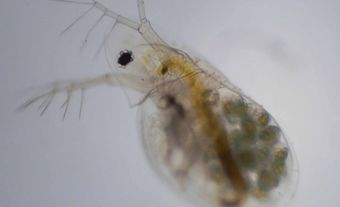
Centipede (class Chilopoda), elongate, flattened terrestrial arthropod. The head bears antennae. The adult is composed of 18-180 segments, plus a tail-plate. Almost all body segments, except the last, have a pair of appendages totalling, in adults, from 15 (as in the most familiar Canadian species) to 179 pairs. The first pair is modified to form large, poisonous claws; the last pair, less strongly modified, has a reproductive function; others are walking legs.
Range
About 2500 species are known worldwide, mostly from the tropics. About 70 species occur in Canada and Alaska; a dozen of these have been introduced from Europe. The latter species are largely eastern. Some tropical species are very large, one reaches nearly 30 cm long. The largest Canadian species seldom reaches 8 cm; most familiar centipedes are less than 2.5 cm long. Centipedes are chiefly nocturnal, living under stones, bark, leaf-litter or in soil. One or 2 species live in crevices and under seaweed in marine, intertidal zones.
Diet
Virtually all centipedes prey on smaller animals (eg, insects) captured with poisonous claws. Some large species may inflict poisonous "bites" on humans if handled carelessly, but they are aggressive only toward prey.
Interaction with Humans
In Canada only the introduced house centipede (Scutigera coleoptrata) can inflict a painful (not dangerous) nip to humans. The introduced garden or "greenhouse centipede" (Scutigerella immaculata), sometimes a horticultural pest, especially in southern Ontario, is not a true centipede but belongs to a small, distantly related noncarnivorous class (Symphyla), with only 2-3 species in Canada.

 Share on Facebook
Share on Facebook Share on X
Share on X Share by Email
Share by Email Share on Google Classroom
Share on Google Classroom


